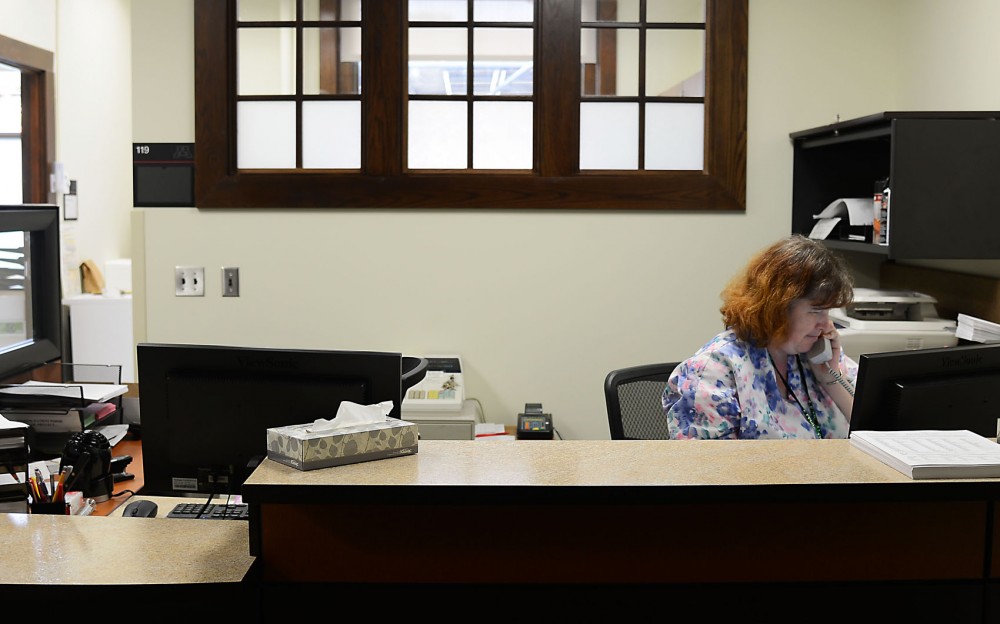Minority students at the University of Minnesota face barriers when seeking mental healthcare their non-person of color counterparts don’t face.
As college campuses boost mental health awareness, students from minority groups have worse access and quality of care, and the University a joint committee of the Council of Graduate Students and Professional Student Government conducted a report to assess how the school’s mental health resources serve minority students.
The report is based on interviews with 15-20 undergraduate and graduate students. Common concerns included micro-aggressions, cultural barriers, faculty-student relationships and administrative concerns, said Kelly Wallin, one of the report’s co-authors.
The committee plans to deliver the report to the Board of Regents and administration later this month.
Last semester, the same committee delivered a resolution to the administration calling for a reworking of mental health services at the University.
The pressures of college are an integral play a big role in mental health, said Richard Lee, a University psychology professor. Lee has researched the way ethnic identity can play into mental well-being, and said that the difficulties a student faces in college can vary based on a variety of demographic characteristics.
Students of color may face difficulties trying to find ways to succeed in a trying environment, he said.
“Any burden or stress that they’re experiencing isn’t necessarily because they aren’t capable … It’s merely because they’re working in a system that was set up for white, middle-class men originally.”
In his research, Lee said he’s found the level a person takes pride in their identity can have beneficial effects, but also negative effects when someone’s identity is attacked.
In recent months, the political climate and events — such as the Philando Castille shooting and the Washington Avenue Bridge vandalism — have caused an increase in anxiety and depressive symptoms in communities of color, said Jerry Shih, clinical director of University Student Counseling Services.
“There are a lot of different ways our counselors need to be equipped to provide good service to a really diverse student body,” he said.
SCS counselors take cultural training courses to prepare themselves for the different backgrounds they face on the University’s campus, Shih said.
Boynton Health’s leadership team undergoes cultural training as well, said communications director Dave Golden.
Shih said SCS considers itself successful when it comes to serving communities of color because the percentage of students it serves from those communities is greater than the percentage of student population at the University from those same communities.
Historically, people of color use mental health services at a lower rate than Caucasians, but that is changing for the better, he said.
“Partly it’s because people are becoming more informed about the counseling process in general,” Shih said. “I think more and more people know someone who have gotten counseling and benefitted from it.”
Discussions between friends is one of the most effective ways to break stigmas, said Dr. Ludmila De Faria, a member of the American Psychiatric Association and a clinical assistant professor at Florida State University.
“Word-of-mouth and peer education … is a contagion effect; they go back and spread the word that ‘Hey, it’s not a big deal,’” De Faria said.
Levels of stigma remain among various populations, though awareness campaigns have generally helped lower it, De Faria said.
“Overall, I think there has been an improvement, except that I think the people who are benefitting from the destigmatization … are white, Caucasian students,” she said.
She said other ways to make the service more approachable include hiring more people of color as practitioners and cultural competency training.
“I don’t think people realize how their lack of cultural competency interferes,” De Faria said.
The COGS-PSG mental health report recommends more counselors of color be hired, said Wallin, one of the report’s co-authors.
Other recommendations include targeted outreach in communities in non-traditional ways.
For example, contextualizing mental health issues in academics, like asking if anxiety is making a test more difficult, may make personal conversations more approachable, Wallin said.
“Many of [the recommendations] are going to be a little bit more broad, but the report isn’t supposed to be something we hand to the administration and now [they] have an instructional manual,” she said. “It’s meant primarily to be a stepping stone, and an initiator of conversation.”
This article has been updated to correct the name of the American Psychiatric Association.

















